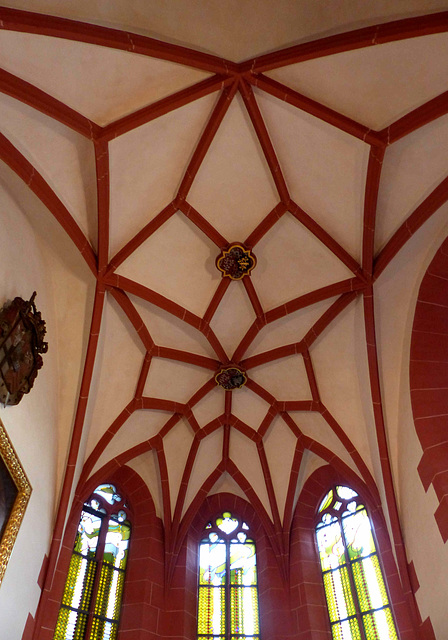Frankfurt - Gumball machine
Nidau - Schloss Nidau
Biel/Bienne - Gerechtigkeitsbrunnen
Biel/Bienne - Stadtkirche
Biel/Bienne - Engelsbrunnen
Biel/Bienne - Bilingual
Biel/Bienne - Fromagerie Spielhofer
Biel/Bienne - Volkshaus
Aigle - Château d’Aigle
Aigle - Clos de la Cure
Aigle - Saint-Maurice d'Aigle
Aigle - Saint-Maurice d'Aigle
Aosta - Cattedrale di Santa Maria Assunta
Aosta - Cattedrale di Santa Maria Assunta
Aosta - Cattedrale di Santa Maria Assunta
Aosta - Cattedrale di Santa Maria Assunta
Aosta - Piazza Chanoux
Aosta
Torino - Palazzo Madama e Casaforte degli Acaja
Torino - Mercato Centrale
Torino - Antica Tettoia dell'Orologio di Porta Pal…
Torino - Antica Tettoia dell'Orologio di Porta Pal…
Torino - La Bella Macchina
Frankfurt - St. Leonhard
Frankfurt - St. Leonhard
Frankfurt - Kaiserdom St. Bartholomäus
Frankfurt - Kaiserdom St. Bartholomäus
Frankfurt - Kaiserdom St. Bartholomäus
Frankfurt - Kaiserdom St. Bartholomäus
Frankfurt - Kaiserdom St. Bartholomäus
Frankfurt - Haus zur Goldenen Waage
Frankfurt - Alte Nikolaikirche
Frankfurt - Alte Nikolaikirche
Frankfurt - Römer
Frankfurt - Römerberg
Frankfurt - Paulskirche
Frankfurt
Frankfurt - Hauptbahnhof
Haguenau
Haguenau - Saint-Georges
Haguenau - Saint-Georges
Haguenau - Saint-Georges
Haguenau - Saint-Georges
Haguenau - Saint-Georges
Haguenau - Saint-Georges
Location
See also...
Keywords
Authorizations, license
-
Visible by: Everyone -
All rights reserved
-
64 visits
Frankfurt - St. Leonhard


Frankfurt (Frankfurt am Main) is the most populous city in the German state of Hesse. The city is the heart of the larger Rhine-Main metropolitan region, which has a population of more than 5.8 million and is Germany's second-largest metropolitan region.
Alemanni and Franks lived there, and by 794, Charlemagne presided over an imperial assembly and church synod, at which Franconofurd was first mentioned. It was one of the two capitals of Charlemagne's grandson Louis the German. Louis founded the collegiate church, rededicated in 1239 to Bartholomew the Apostle and now Frankfurt Cathedral.
Frankfurt was one of the most important cities in the Holy Roman Empire. From 855, the German kings were elected and crowned in Aachen. From 1562, the kings and emperors were crowned and elected in Frankfurt. This tradition ended in 1792.
The Frankfurter Messe ('Frankfurt Trade Fair') was first mentioned in 1150. Book trade fairs began in 1478. In 1372, Frankfurt became a Reichsstadt (Imperial Free City), directly subordinate to the Holy Roman Emperor and was the Free City of Frankfurt, for nearly five centuries. It lost its sovereignty upon the collapse of the empire in 1806, regained it in 1815 and then lost it again in 1866, when it was annexed by the Kingdom of Prussia.
In a (still existing) document from 1219, King Frederick II donated the property to the city. In addition, the citizens were given the right to appoint the priest. The church began as a Romanesque basilica, built in the center of the town. It was remodeled around 1425 with a late Gothic choir with stained-glass windows from 1435. The church was expanded to a hall church in late Gothic style with four aisles between 1508 and 1520. In 1792, French troops occupied the building, used it for storage, and sold much of its furniture.
The church was the only one of nine churches in the Old Town that was almost completely undamaged during WW II.
Alemanni and Franks lived there, and by 794, Charlemagne presided over an imperial assembly and church synod, at which Franconofurd was first mentioned. It was one of the two capitals of Charlemagne's grandson Louis the German. Louis founded the collegiate church, rededicated in 1239 to Bartholomew the Apostle and now Frankfurt Cathedral.
Frankfurt was one of the most important cities in the Holy Roman Empire. From 855, the German kings were elected and crowned in Aachen. From 1562, the kings and emperors were crowned and elected in Frankfurt. This tradition ended in 1792.
The Frankfurter Messe ('Frankfurt Trade Fair') was first mentioned in 1150. Book trade fairs began in 1478. In 1372, Frankfurt became a Reichsstadt (Imperial Free City), directly subordinate to the Holy Roman Emperor and was the Free City of Frankfurt, for nearly five centuries. It lost its sovereignty upon the collapse of the empire in 1806, regained it in 1815 and then lost it again in 1866, when it was annexed by the Kingdom of Prussia.
In a (still existing) document from 1219, King Frederick II donated the property to the city. In addition, the citizens were given the right to appoint the priest. The church began as a Romanesque basilica, built in the center of the town. It was remodeled around 1425 with a late Gothic choir with stained-glass windows from 1435. The church was expanded to a hall church in late Gothic style with four aisles between 1508 and 1520. In 1792, French troops occupied the building, used it for storage, and sold much of its furniture.
The church was the only one of nine churches in the Old Town that was almost completely undamaged during WW II.
kiiti, Marco F. Delminho, Alexander Prolygin have particularly liked this photo
- Keyboard shortcuts:
Jump to top
RSS feed- Latest comments - Subscribe to the comment feeds of this photo
- ipernity © 2007-2024
- Help & Contact
|
Club news
|
About ipernity
|
History |
ipernity Club & Prices |
Guide of good conduct
Donate | Group guidelines | Privacy policy | Terms of use | Statutes | In memoria -
Facebook
Twitter

Sign-in to write a comment.